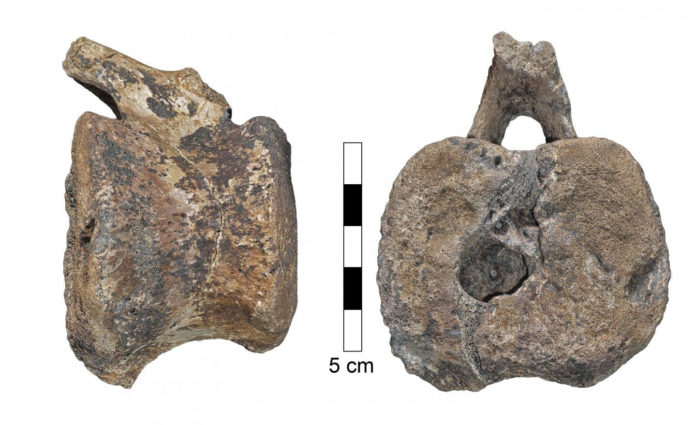Susceptibility to diseases is common to humans and dinosaurs. Since its conditions shape a significant part of the biological history of each living animal, recognizing them in the fossilized bone can furnish us with essential data on dinosaurs’ physiology and anatomy, just as on their daily activities and the surrounding environment.
In a new study, scientists identified the fossilized tail of a young dinosaur that lived on a prairie in southern Alberta, Canada. They found a benign tumor that still afflicts humans, particularly children under the age of 10.
Scientists examined the vertebrae of two humans from skeletal collections with Langerhans Cell Histiocytosis (LCH), a benign osteolytic tumor-like disorder involving mainly the skeleton; they were diagnosed in life, along with two hadrosaur vertebrae with an apparent lesion.
Dr. Hila May of the Department of Anatomy and Anthropology at TAU‘s Sackler Faculty of Medicine and Dan David Center for Human Evolution and Biohistory Research said, “Scientists spotted an unusual finding in the vertebrae of a tail of a young dinosaur of the grass-eating herbivore species, common in the world 66-80 million years ago. There were large cavities in two of the vertebral segments, which were unearthed at the Dinosaur Provincial Park in southern Alberta, Canada.”
“They were extremely similar to the cavities produced by tumors associated with the rare disease LCH that still exists today in humans. Most of the LCH-related tumors, which can be very painful, suddenly appear in the bones of children aged 2-10 years. Thankfully, these tumors disappear without intervention in many cases.”
The dinosaur tail vertebrae were sent for on-site advanced micro-CT scanning to the Shmunis Family Anthropology Institute at TAU’s Dan David Center for Human Evolution and Biohistory Research, Sackler Faculty of Medicine.
Dr. May said, “The micro-CT produces very high-resolution imaging, up to a few microns. We scanned the dinosaur vertebrae and created a computerized 3-D reconstruction of the tumor and the blood vessels that fed it. The micro and macro analyses confirmed that it was, in fact, LCH. This is the first time this disease has been identified in a dinosaur.”
“The findings indicate that the disease is not unique to humans and that it has survived for more than 60 million years.”
Prof. Israel Hershkovitz of TAU’s Department of Anatomy and Anthropology and Dan David Center for Human Evolution and Biohistory Research said, “These kinds of studies, which are now possible thanks to innovative technology, make an important and interesting contribution to evolutionary medicine, a relatively new field of research that investigates the development and behavior of diseases over time. We are trying to understand why certain diseases survive evolution to decipher what causes them to develop new and effective ways of treating them.”
The discovery was published on February 10 in Scientific Reports.
